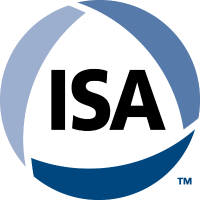ISA actively participates in the world’s primary international standards system as sanctioned by the United Nations and operated by the Geneva-based International Electrotechnical Organization (IEC) and International Organization for Standardization (ISO). This relationship with IEC and ISO adds a layer of complexity to what many already find to be the sometimes confusing world of standards.
Much of the confusion arises from the fundamentally different member structures involved in ISA standards development as opposed to IEC/ISO. Participation in ISA standards is based strictly on individuals – and is open to automation professionals from any country (not just the US). IEC and ISO programs, in contrast, are based on participation by and through countries acting as single members.
That difference means that ISA cannot participate directly in the IEC/ISO systems, but rather must channel its input through a specific country to do so. That country is the US by way of the American National Standards Institute (ANSI). ISA is accredited by ANSI to develop industry standards following approved processes that ensure openness and balance. ISA is one of 250+ standards developing organizations based in the US (such as ASTM, ASME, UL and others) that are accredited in this way by ANSI.
In relation to the IEC and ISO, ANSI serves as the official "national standards body" of the US. That is, ANSI acts as the official representative (“National Committee”) to the IEC and ISO of those 250+ accredited US standards developers. Similarly, other IEC and ISO members are the national standards bodies of participating countries such as Brazil (ABNT), the UK (BSI), Japan (JISC), Canada (SCC), Germany (DKE), and so forth.
Per the topic division between the IEC and ISO, ISA’s primary areas of standards development are covered by the IEC. Through ANSI as the “US National Committee to the IEC,” several major series of standards developed by ISA have been submitted to the IEC to become the basis of major IEC series of standards with the same titles, including:
- IEC 62682: Management of Alarm Systems for the Process Industries (ISA-18)
- IEC 61511: Functional Safety - Safety Instrumented Systems for the Process Industry Sector (ISA-84)
- IEC 61512: Batch Control (ISA-88)
- IEC 62264: Enterprise-Control System Integration (ISA-95)
- IEC 62443: Security for Industrial Automation & Control Systems (ISA-99)
- IEC 62734: Wireless Systems for Industrial Automation (ISA-100)
- IEC 63303: Human-Machine Interfaces for Process Automation Systems (ISA-101)
This development of ISA standards into IEC standards is the primary, but not only, means of interaction between ISA and IEC -- occasionally ISA standards committees decide, through review and voting, that existing IEC standards are suitable for adoption (sometimes with modification) as ISA standards. For example, in 2018, the ISA84 committee adopted IEC 61511-2016 (which had been developed by IEC committee SC65A with substantial input from ISA84 members) as ISA-61511.
This type of adoption of an IEC standard by an ISA committee can create another source of confusion for ISA members. A major attraction and benefit of ISA membership is free viewing of ISA-copyrighted standards. However, when ISA standards committees decide to adopt an existing IEC standard as an ISA standard (such as the example of ISA84 and IEC 61511), the controlling copyright of the adopted standard (ISA-61511 in the example) remains with the IEC. For that reason, ISA members do not have free viewing access to IEC standards that have been adopted by ISA (ISA-61511 in the example). This restriction, which applies only to the small number of ISA standards adopted from the IEC, is driven by copyright law.
If you are interested in joining an ISA standards committee or have any questions, please visit www.isa.org/standards, or email standards@isa.org.




